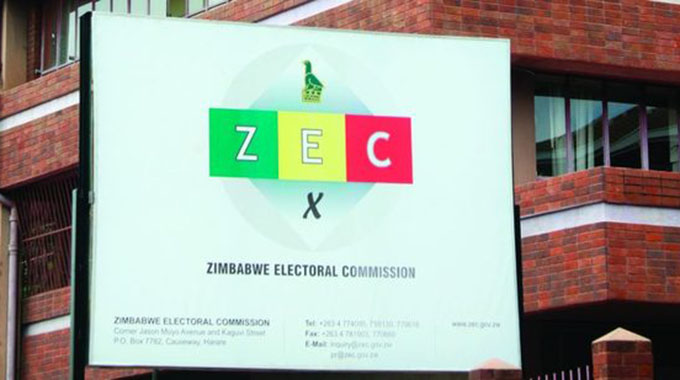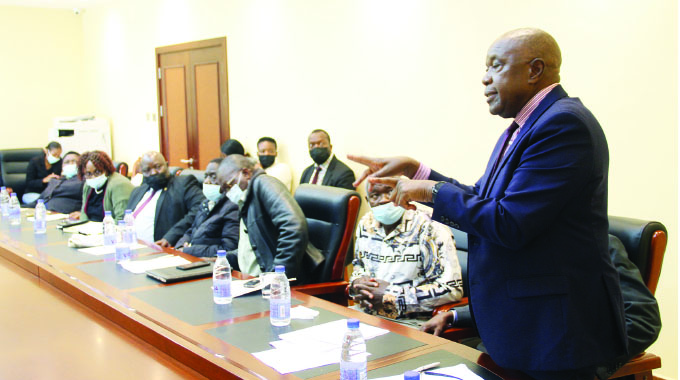EDITORIAL COMMENT : Nust investment in PCR kits shows way forward

There is a tendency, almost a culture, in Zimbabwe to assume that if something involves hi-tech procedures or manufacturing, we need to go outside the country or import the products.
One of the reasons President Mnangagwa ordered the opening of innovation hubs at all State universities and advanced technology institutes was to end this quickly and replace it with a far more “can do” culture, with the only real question that now has to be answered is how does the cost-benefit analysis work.
Using the universities and technology institutes made sense, since they have a significant percentage of Zimbabwe’s higher end technically qualified people already on the staff, and moreover this staff already works in an environment where research is part of the job description, with all that we now want is a stress on research that leads to practical results.
When some bright Zimbabweans come up with a good idea that can go into production, a financial analysis can be done and if the numbers crunch the right way, the Government is prepared to put up the initial investment. This has already been done for a range of activities and new industries.
The latest gain from the policy switch is the equipping of the National University of Science and Technology in Bulawayo to make the PCR test kits that are needed to get a guaranteed positive diagnosis of Covid-19, and for that matter a guaranteed proof that the patient is not infected with Covid-19.
This is the test that looks for the actual virus, and finds it if you are positive and does not if you are negative.
Nust did the sums and the Government agreed and has put up the investment of US$86 000 for the basic equipment, plus another set of payments for the local equipment that is needed to support what has already been created as the Nust Applied Genetic Testing Centre.
Initial indications are that the PCR tests, which at present cost around US$60 each, could fall in price to US$20.
Even if that is totally optimistic and they only fall to, say, US$40 and even if the local additions will double the price of the central equipment, it will still take less than 10 000 tests for the investment to pay for itself.
This is the sort of cost recovery period that makes accountants drool.
But as the director of Nust’s new centre, Mr Zephaniah Dhlamini noted, the same equipment can be used in the production of other tests for other viruses, from HIV onwards, plus be used to create tests for genetic mapping of elephant and rhino populations.
Quite a lot of this is for something we do not do in Zimbabwe or do very rarely because of costs.
This means that the innovation is not just of Covid-19, but can be applied across a wide range of other genetic tracing, and that will also provide the income needed to maintain the equipment, modernise it when necessary and make sure that our capacity increases rather than decreases.
But this new equipment, and we need to note that adaptations needed to be made and a fair amount of Zimbabwean engineering added to create the place where the machine plugs in, also shows that we do not continually have to look outside.
Of course we needed to find a manufacturer of the equipment, as some things do not make sense to make in Zimbabwe, when you only need one or two of them.
But this is not a problem. One of the smash-ups in the local economy in the days of hyperinflation and dollarisation was our pharmaceutical and medical products industry.
Admittedly a lot of this was pure localisation, without counting the financial costs of doing that, and we had the usual problem seen of a reluctance of industrialists to re-equip and replace worn out or obsolete equipment.
But there is a great deal more that we can and should be doing. The Covid-19 pandemic changed a lot of the way Government thinks. President Mnangagwa was quite open early in the pandemic when he expressed his surprise at what Zimbabwean businesses and universities were doing, and that certainly was one of the reasons he pushed harder for the innovation hubs he wanted.
And just as importantly the Government has come up with the starter capital for new ventures, although with the caveat that they also need to stand on their own feet once they get going.
Late last year a Government-backed plant opened in Mutare to produce medical-grade oxygen, partly fuelled by the need for supplies for serious Covid-19 patients, but obviously benefiting many more with other respiratory illnesses and complaints.
All these sort of things are important. We used to have companies that exported medical equipment made in Zimbabwe, things like baby incubators and the like. We clearly have the capacity to build and run such industries and, with what we are now seeing at Nust, the capacity to move into the more rarefied heights.
This process must be pushed as obviously there is more that we can do.
So far the way it is being implemented is the smart way, bright innovators coming up with an idea, the university going through it, sanding off the rough edges and outlining a viable business plan, and the Government looking at it from all sides and then coming up with the seed money to get the idea off the ground.











Comments